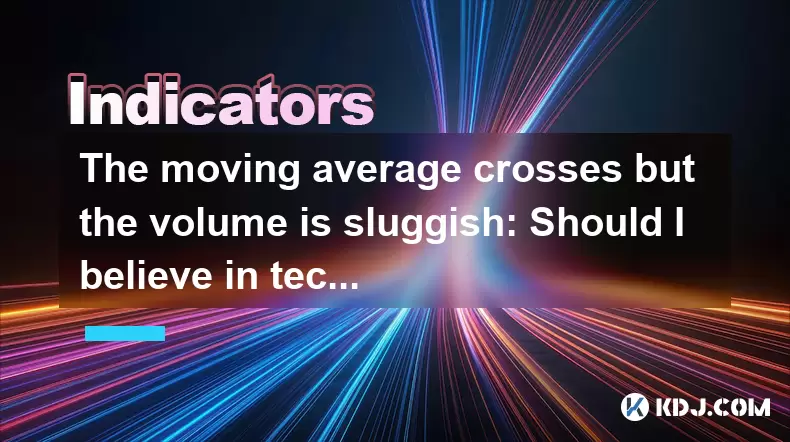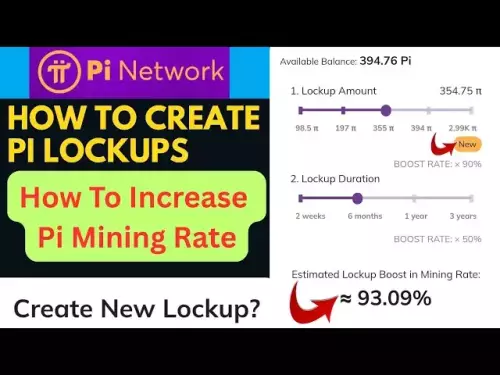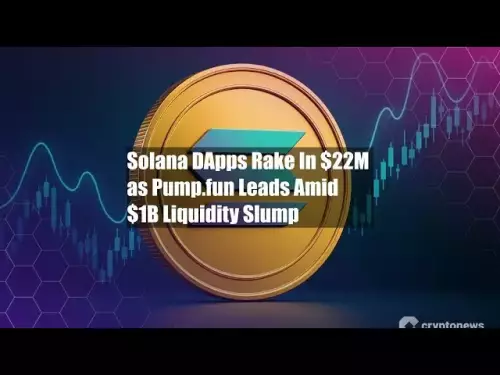-
 bitcoin
bitcoin $114779.865156 USD
2.30% -
 ethereum
ethereum $4226.519789 USD
2.39% -
 tether
tether $1.000545 USD
0.04% -
 xrp
xrp $2.890223 USD
0.92% -
 bnb
bnb $1030.029301 USD
2.95% -
 solana
solana $212.824944 USD
1.69% -
 usd-coin
usd-coin $0.999757 USD
0.01% -
 dogecoin
dogecoin $0.234961 USD
-0.27% -
 tron
tron $0.337174 USD
0.42% -
 cardano
cardano $0.804783 USD
0.09% -
 hyperliquid
hyperliquid $45.748770 USD
-2.85% -
 chainlink
chainlink $21.699170 USD
0.82% -
 ethena-usde
ethena-usde $1.001452 USD
0.08% -
 avalanche
avalanche $30.237800 USD
1.14% -
 stellar
stellar $0.372604 USD
1.52%
The moving average crosses but the volume is sluggish: Should I believe in technical signals?
When a moving average crossover occurs with low volume, traders should seek additional confirmation from indicators like RSI or MACD before acting on the signal.
Jun 10, 2025 at 11:49 am

When it comes to trading in the cryptocurrency market, technical analysis often plays a pivotal role in decision-making. One of the most common technical signals traders rely on is the moving average crossover. This signal occurs when a short-term moving average crosses over a long-term moving average, indicating potential trend changes. However, a scenario that frequently puzzles traders is when a moving average crossover happens, but the trading volume remains sluggish. This raises the critical question: Should you believe in technical signals when the volume is low?
Understanding Moving Average Crossovers
A moving average crossover is a popular tool used by traders to identify potential buy and sell signals. The most common type of crossover involves a short-term moving average, like the 50-day moving average, crossing over a long-term moving average, such as the 200-day moving average. When the short-term average crosses above the long-term average, it is often interpreted as a bullish signal, suggesting that the price may continue to rise. Conversely, when the short-term average crosses below the long-term average, it is seen as a bearish signal, indicating potential downward movement.
The Role of Volume in Technical Analysis
Volume is another crucial element in technical analysis. High trading volume typically confirms the strength of a trend, while low volume might suggest a lack of conviction among traders. When a moving average crossover occurs with high volume, it is generally considered a more reliable signal. However, when the volume is sluggish, it can cast doubt on the validity of the crossover signal.
Analyzing Sluggish Volume During Crossovers
When a moving average crossover happens but the volume remains low, it can indicate several things. Firstly, it might suggest that the market is not fully committed to the new trend. Traders might be hesitant, leading to lower trading activity. Secondly, it could be a sign of a false signal, where the crossover might not lead to a sustained trend change. Lastly, it might indicate that the market is in a consolidation phase, where prices are moving sideways without a clear direction.
Case Studies: Moving Average Crossovers with Low Volume
To better understand the impact of low volume on moving average crossovers, let's look at some case studies from the cryptocurrency market.
Case Study 1: Bitcoin (BTC) in 2021In early 2021, Bitcoin experienced a bullish crossover of the 50-day moving average over the 200-day moving average. However, the volume during this crossover was relatively low compared to previous spikes. This crossover initially led to a short-term rally, but the lack of volume suggested that the market was not fully committed. As a result, the price soon reverted, indicating that the crossover was a false signal.
Case Study 2: Ethereum (ETH) in 2020In mid-2020, Ethereum saw a bearish crossover with the 50-day moving average dropping below the 200-day moving average. The volume during this crossover was significantly lower than usual, hinting at a lack of conviction among traders. Following the crossover, the price did not continue its downward trend as expected but instead entered a consolidation phase, further confirming the impact of low volume on the reliability of the signal.
Strategies for Trading with Low Volume Crossovers
Given the potential unreliability of moving average crossovers with low volume, traders need to adopt strategies that account for this uncertainty. Here are some approaches to consider:
Wait for ConfirmationOne effective strategy is to wait for additional confirmation signals before acting on a crossover. This could include waiting for a subsequent increase in volume or looking for other technical indicators, such as the Relative Strength Index (RSI) or the Moving Average Convergence Divergence (MACD), to confirm the trend.
Use Multiple TimeframesAnalyzing the crossover on multiple timeframes can provide a more comprehensive view. If a crossover on a daily chart is accompanied by low volume, checking the same crossover on a weekly chart might offer additional insights. A crossover confirmed on multiple timeframes, even with low volume, might be more reliable.
Consider Market ContextUnderstanding the broader market context is crucial. If the entire market is experiencing low volume due to external factors, such as holidays or significant economic announcements, it might be prudent to wait for more favorable conditions before making a trading decision.
Risk ManagementImplementing strict risk management rules is essential when dealing with potentially unreliable signals. This includes setting stop-loss orders to limit potential losses and only risking a small percentage of the trading capital on any single trade.
The Psychological Aspect of Trading with Low Volume
The psychological impact of trading with low volume crossovers cannot be overlooked. Traders may experience doubt and hesitation when a technical signal is not supported by strong volume. This can lead to missed opportunities or premature exits from trades. Developing a disciplined trading plan and sticking to it can help mitigate these psychological challenges. Additionally, keeping a trading journal to document the outcomes of trades based on low volume crossovers can provide valuable insights over time.
Technical Indicators to Complement Moving Average Crossovers
To enhance the reliability of moving average crossovers when volume is low, traders can use other technical indicators to complement their analysis. Here are some useful indicators:
Relative Strength Index (RSI)The RSI measures the speed and change of price movements. An RSI reading above 70 indicates an overbought condition, while a reading below 30 suggests an oversold condition. If a moving average crossover occurs with low volume but the RSI confirms the trend, it might be a more reliable signal.
Moving Average Convergence Divergence (MACD)The MACD is a trend-following momentum indicator that shows the relationship between two moving averages of a security’s price. A bullish MACD crossover (when the MACD line crosses above the signal line) can provide additional confirmation of a bullish moving average crossover, even if the volume is low.
Volume OscillatorThe Volume Oscillator measures the difference between two volume moving averages. It can help identify whether volume is increasing or decreasing over time. If a moving average crossover is accompanied by a rising Volume Oscillator, it might suggest that the low volume is temporary and that the trend has potential.
FAQs
Q1: Can other technical indicators help validate a moving average crossover with low volume?Yes, other technical indicators like the RSI, MACD, and Volume Oscillator can provide additional confirmation of a trend, even when the volume is low. These indicators can help traders make more informed decisions by offering a more comprehensive view of market conditions.
Q2: How can I improve my trading decisions when dealing with low volume signals?To improve trading decisions with low volume signals, consider waiting for additional confirmation, analyzing multiple timeframes, understanding the broader market context, and implementing strict risk management. Keeping a trading journal and developing a disciplined trading plan can also enhance decision-making.
Q3: Is it always necessary to have high volume for a moving average crossover to be valid?No, high volume is not always necessary for a moving average crossover to be valid. However, high volume often confirms the strength of a trend. If volume is low, it's important to look for other confirming indicators and consider the broader market context before making a trading decision.
Q4: How can I differentiate between a false signal and a genuine trend change when volume is low?Differentiating between a false signal and a genuine trend change with low volume can be challenging. Look for additional confirming indicators such as RSI or MACD, analyze the crossover on multiple timeframes, and consider the overall market context. If the signal is not supported by these factors, it might be a false signal.
Disclaimer:info@kdj.com
The information provided is not trading advice. kdj.com does not assume any responsibility for any investments made based on the information provided in this article. Cryptocurrencies are highly volatile and it is highly recommended that you invest with caution after thorough research!
If you believe that the content used on this website infringes your copyright, please contact us immediately (info@kdj.com) and we will delete it promptly.
- ChatGPT, Bitcoin, and $HYPER: Riding the Crypto Wave
- 2025-09-30 16:25:14
- Mutuum Finance (MUTM): Riding the DeFi Wave with Crypto Price Prediction
- 2025-09-30 16:25:14
- XRP ETF Approval Odds Soar: Analyst Predicts $33 Price Surge!
- 2025-09-30 16:30:01
- Keel, Solana, and Sky Stablecoin: Fueling the Future of DeFi
- 2025-09-30 16:45:13
- EcoChain, DePIN Infrastructure, and X1Nodes: Powering the Web4 Revolution
- 2025-09-30 16:30:01
- Pi Network's Institutional Momentum: Leading the Web3 Revolution
- 2025-09-30 16:45:13
Related knowledge

What is a tower bottom candlestick pattern? Does it have a high success rate?
Sep 22,2025 at 07:18am
Tower Bottom Candlestick Pattern Explained1. The tower bottom candlestick pattern is a reversal formation that typically appears at the end of a downt...

What is a black hole pattern in the MACD indicator? Is it a cause for concern?
Sep 21,2025 at 06:54pm
Bitcoin's Role in Decentralized Finance1. Bitcoin remains the cornerstone of decentralized finance, serving as a benchmark for value and security acro...

How can I use the psychological line (PSY) to determine market sentiment?
Sep 17,2025 at 02:19pm
Understanding the Psychological Line (PSY) in Cryptocurrency TradingThe Psychological Line, commonly referred to as PSY, is a momentum oscillator used...

How can I determine if a double top pattern has officially formed?
Sep 21,2025 at 03:18am
Understanding the Structure of a Double Top Pattern1. A double top pattern consists of two distinct peaks that reach approximately the same price leve...

What is the Golden Valley pattern on the moving average? Is it better than the Silver Valley pattern?
Sep 21,2025 at 02:54pm
Understanding the Golden Valley Pattern in Moving Averages1. The Golden Valley pattern is a technical formation observed in cryptocurrency price chart...

What does a death cross of the RSI in the strong zone (above 50) mean?
Sep 17,2025 at 10:54pm
Understanding the Death Cross in RSI Context1. The term 'death cross' is traditionally associated with moving averages, where a short-term average cro...

What is a tower bottom candlestick pattern? Does it have a high success rate?
Sep 22,2025 at 07:18am
Tower Bottom Candlestick Pattern Explained1. The tower bottom candlestick pattern is a reversal formation that typically appears at the end of a downt...

What is a black hole pattern in the MACD indicator? Is it a cause for concern?
Sep 21,2025 at 06:54pm
Bitcoin's Role in Decentralized Finance1. Bitcoin remains the cornerstone of decentralized finance, serving as a benchmark for value and security acro...

How can I use the psychological line (PSY) to determine market sentiment?
Sep 17,2025 at 02:19pm
Understanding the Psychological Line (PSY) in Cryptocurrency TradingThe Psychological Line, commonly referred to as PSY, is a momentum oscillator used...

How can I determine if a double top pattern has officially formed?
Sep 21,2025 at 03:18am
Understanding the Structure of a Double Top Pattern1. A double top pattern consists of two distinct peaks that reach approximately the same price leve...

What is the Golden Valley pattern on the moving average? Is it better than the Silver Valley pattern?
Sep 21,2025 at 02:54pm
Understanding the Golden Valley Pattern in Moving Averages1. The Golden Valley pattern is a technical formation observed in cryptocurrency price chart...

What does a death cross of the RSI in the strong zone (above 50) mean?
Sep 17,2025 at 10:54pm
Understanding the Death Cross in RSI Context1. The term 'death cross' is traditionally associated with moving averages, where a short-term average cro...
See all articles










































































